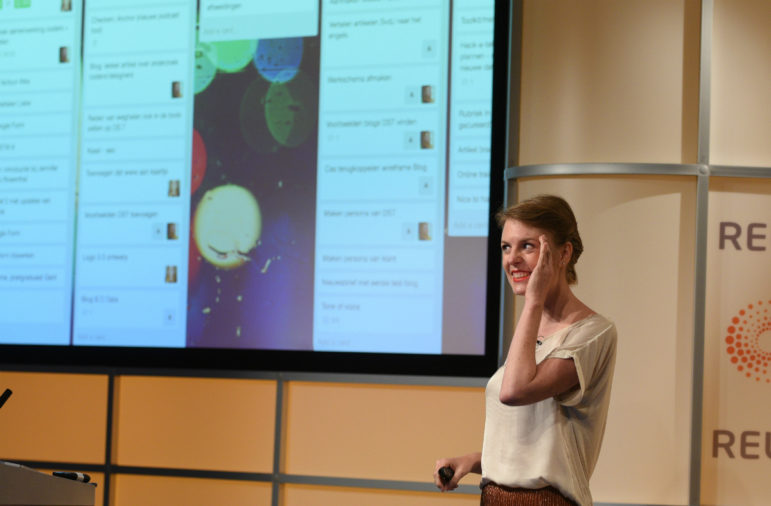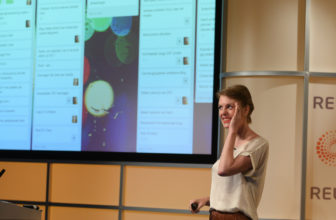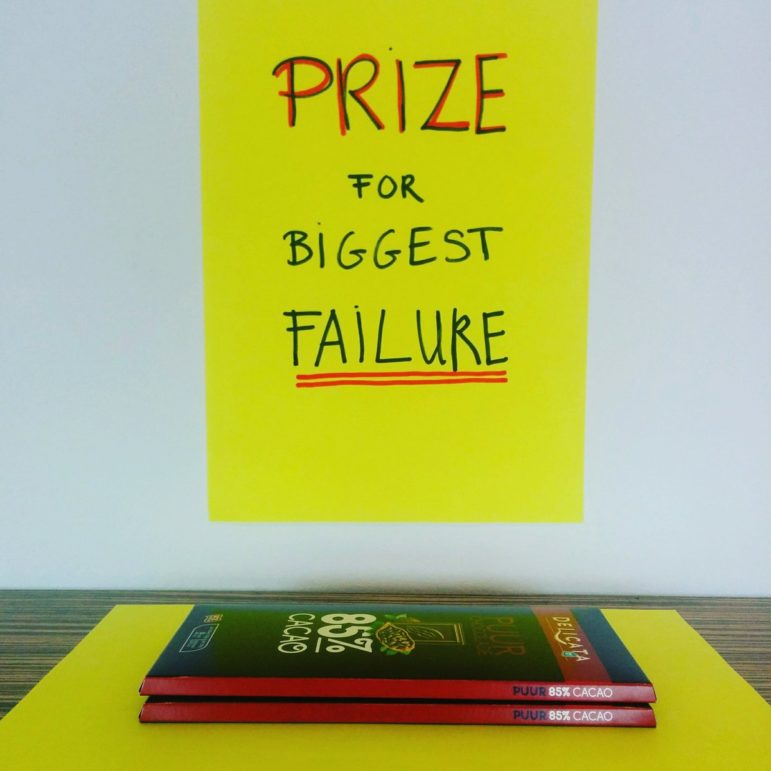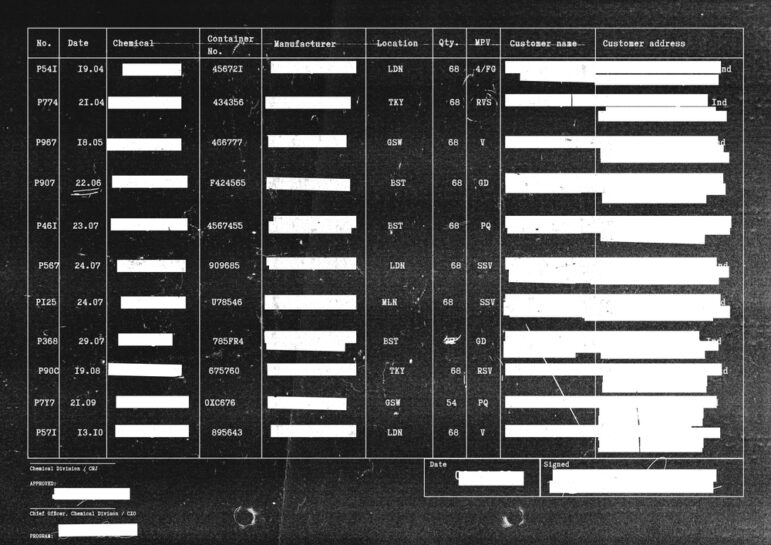

Ten Tips for Journalist and Coder Collaborations
Collaboration with newsroom developers and journalists is key to improving journalism. Hackastory did some research and interviewed 19 newsroom developers and journalists around the world for their best advice — and even added some personal (embarrassing) experiences.
1. Understand the Internet
“Be excited, open-minded and understand the possibilities of the internet,” says Daan Louter, who worked for four years with journalists as a developer on the Visuals Team at The Guardian. “The best-performing projects came from journalists who understand the medium. They came up with a very precise idea and what they want to achieve.”
2. Speak the Same Language
“Can you make a long shot?” My cameraman knew exactly what I meant. It was the same with panning. I worked as a journalist for 15 years (12 as an online journalist) and my cameraman understood me. I spoke his language.
This is often not the case between newsroom developers and journalists. It sometimes feels like they’re on two separate islands with a gigantic ocean between them.
So, how does a journalist learn their language? If you want to go for a code masterclass in one of the coding languages like Java, C++, C# Python, JavaScript or Ruby, go for it.
But don’t you actually don’t need to learn how to code?
“It’s easier to teach programmers journalism,” says Greg Linch, project editor for The Washington Post. What is necessary is a sense of what’s possible online. Almost all coders agreed on this one. Some newsrooms hire a “translator,” an effective manager who listens to the two groups and can help understand each other.
@CharlieBeckett @charlesarthur @wblau Journalists like noise and mind-changing. Coders like fortnightly stability and headphones.
— Matt Kelly (@mk1969) June 1, 2015
Also…
3. Google – A Lot
One morning our coder said this on our Slack channel:
What?! Poodle?! So, I Google, a lot! All. The. Time. It’s part of learning a new language. About the poodle vulnerability: the internet can explain it better than I can, so for a full explanation please check this website.
4. No Egos. It’s Teamwork
“The developer is not a deli counter and the reporter doesn’t just come up and order what sandwich they want,” says Andrew Leimdorfer from the BBC in this article. That’s the determining factor for newsroom developers. Everyone is equal in the process and must be equally involved.
Hay Kranen, newsroom developer at the Volkskrant, a leading Dutch newspaper, recognizes the deli-concept.
“Some journalists think they have to give the newsroom developer an assignment,” Kranen says. “Nope, we’re not here to do your assignments.” But he says it is important for the journalist to include the programmer’s expertise on the project. “We are here to think about the process and possibilities; I know exactly what and how much time certain projects cost.”
5. Involve Everybody Early
When I worked at a newspaper I wrote the article. When I finished it, an editor checked it and a designer or photographer created an image. Then the layout was done, and finally it was sent to press. To summarize a traditional workflow:
This process works when the end product is familiar and known, for example an article about Brexit of 500 words or a reportage about climate change of 1.5 minutes. But the online environment is more flexible, which means the traditional workflow is no longer as straightforward as it was.
“There are journalists who aren’t interested in the digital product and who only provide content,” says Kranen.
Louter noticed the same: “Sometimes you work with a journalist who is just busy with his story and gives you 5,000 words.” But journalists, coders and designers should work closely from the start. “It’s not something where one person’s job starts then another person’s job stops. That cooperation continues right until you’ve finished.”
Kranen and Louter agree that close cooperation and early involvement of all minds and skills results in a better product.
6. Work Side by Side
Experts agree on this as well: collaborate in a multidisciplinary team. Data journalist Jerry Vermanen collaborates with newsroom developer Marije Rooze at the KRO-NCRV, a big media company in The Netherlands. They say working side by side is important.
“We don’t set up meetings because we have a continuous discussion the whole time,” says Vermanen.
Rooze calls the conversation a “continuous flow.”
“Ideas sprout the whole time,” says Rooze. “It’s easy, because our desks are situated next to each other.”
Alisha Ramos, front-end designer at Vox says: “Talk to each other and maybe become BFF’s.”
But be aware. A new seating plan won’t solve all your problems, according to Charles Arthur, an editor at The Guardian. “Just seating them together and hoping that great things will result won’t succeed because they operate in different ways.”
7. Understand You Have Different Speeds
“Journalism tends to be surface-skimming, fast-moving; coding/development tends to be deep-diving, strongly focused,” said Arthur in that same article.
Travis Swicegood worked close to journalists in his former job as newsroom developer at The Texas Tribune and continues to do so in his current job as director of engineering at Condé Nast. He recognizes the different speeds.
“It took me a while to be able to talk about the same things,” says Swicegood. “Journalists know how to explain things in articles but when it comes to their workflow everyone but the developers know what’s going on. It’s important that we both understand one another’s workflows and processes.”
8. Structure
One day I asked our coder a simple question: “How can I make your work better or easier?” He had one request: Clean up Trello.
Trello is a web-based tool that teams use to track their progress. It has a simple structure with three categories: to do, doing and done. Coders love it, as well as scrum and agile. They like the structure. Our gigantic to do list didn’t work for him. It’s was a Trello hell for our coder.
 I wanted to show it to you, so I made a screencast, uploaded it to YouTube… and then deleted it. I was too embarrassed. But a couple of hundred attendees at the NewsRewired Conference in London got a sneak peak. This was that moment…
I wanted to show it to you, so I made a screencast, uploaded it to YouTube… and then deleted it. I was too embarrassed. But a couple of hundred attendees at the NewsRewired Conference in London got a sneak peak. This was that moment…
At Hackastory we made a different Trello for all the technical projects. More structure + less chaos = happy coder. Welcome to our Trello heaven.
9. Experiment! Experiment!
Looking back at my years as a journalist, I realize I didn’t experiment enough. I always strived for perfection. In my mind experimenting was linked to failure and errors — and if there’s one thing a journalist doesn’t want in their work, it’s mistakes. It harms your (company’s) credibility. Actually, now I know that’s not true about experimenting.
A lot of the coders we talked to and worked with love experimenting. It’s a big chunk of their work as they push boundaries and explore new grounds.
Kranen wishes more journalists would try it. “I think it would be good if all journalists did a digital project to see what’s going on. And you don’t have to build a complete monument, start with something small.”
At the Hackastory office we want to embrace failure. That’s why we have this weekly prize ?
10. Have Fun!
Yes, that’s right. It’s fun! Hackastory truly believes the best is yet to come in journalism. We know, from personal experience and from working with hundreds of journalists and coders from around the world, there are many — MANY — challenges, but the possibilities are endless in this digital era. Enjoy your role as a pioneer and kick some ass: you have an important job to do.
No Coder – Yet – in Your Newsroom?
No worries. There are plenty of tools and resources available to help you build your digital stories. Or check out these 10 free digital story tools for journalists.
Research and interviews were done by Hackastory editor Annebelle Nooteboom. A more detailed version is available here (in Dutch).
 This post originally appeared on the website of Hackastory and is reproduced with permission.
This post originally appeared on the website of Hackastory and is reproduced with permission.
Albertine Piels is founder and director of Hackastory, and former editor-in-chief of Dutch national news station RTLZ.











